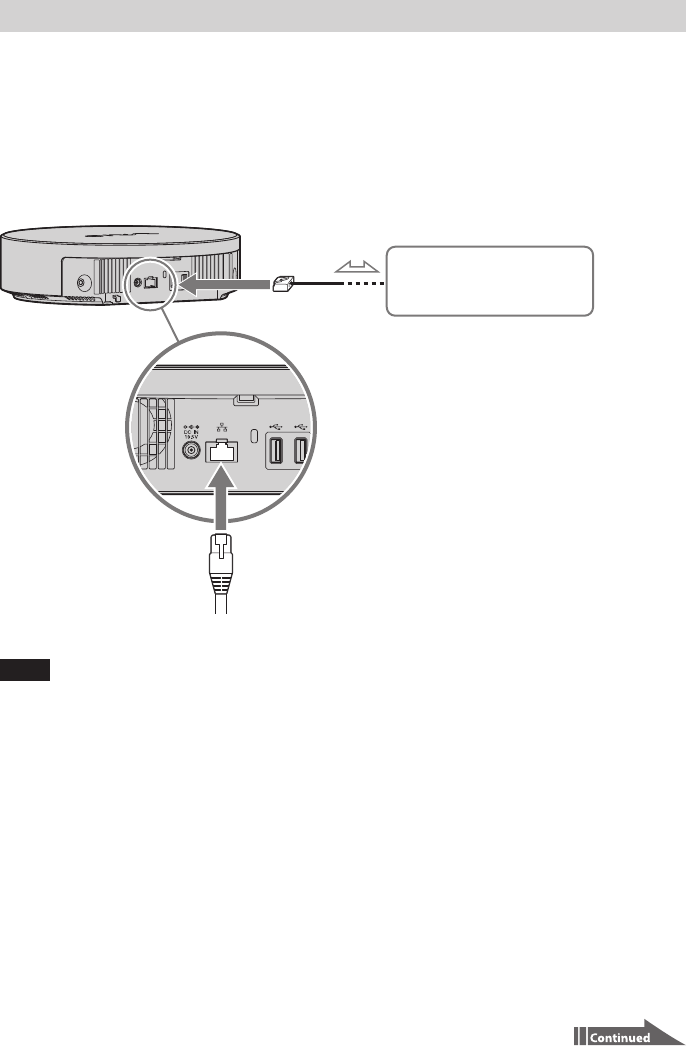
13
VGF-HS1 3-298-361-11(1)
Connecting to a network
You can connect your Home Server to your home network through either of the following:
Wired connection (page 13 to 30)
Read “Restrictions on access to a network with multiple network routers” (page 33) as well.
Wireless connection (page 31)
Wired connection
Connect the supplied network (LAN) cable to the network (LAN) port on the back of your Home Server.
Network (LAN)
To the network (LAN) port
You can connect your Home Server to 1000BASE-T, 100BASE-TX, and 10BASE-T networks.
Note
Do not plug a telephone cable or an irrelevant network cable into the network (LAN) port on your Home Server.
High electric current to the port may cause hardware failures, if the network (LAN) port is connected to the
following telephone lines:
Network lines other than 10BASE-T, 100BASE-TX, and 1000BASE-T lines
Public telephone subscriber line
Digital jack of ISDN public telephone subscriber lines
PBX (private branch exchange)
Home (intercom speakerphone) or business-use telephone lines (multiline business telephone)
Telephone lines other than those mentioned above
Tip
As the data transfer rate over a 10BASE-T network is rather slow, it may take some time to copy files or you may
find missing frames or sound tracks during video or audio playback. It is recommended that you connect your
Home Server to a 1000BASE-T or 100BASE-TX network.


















